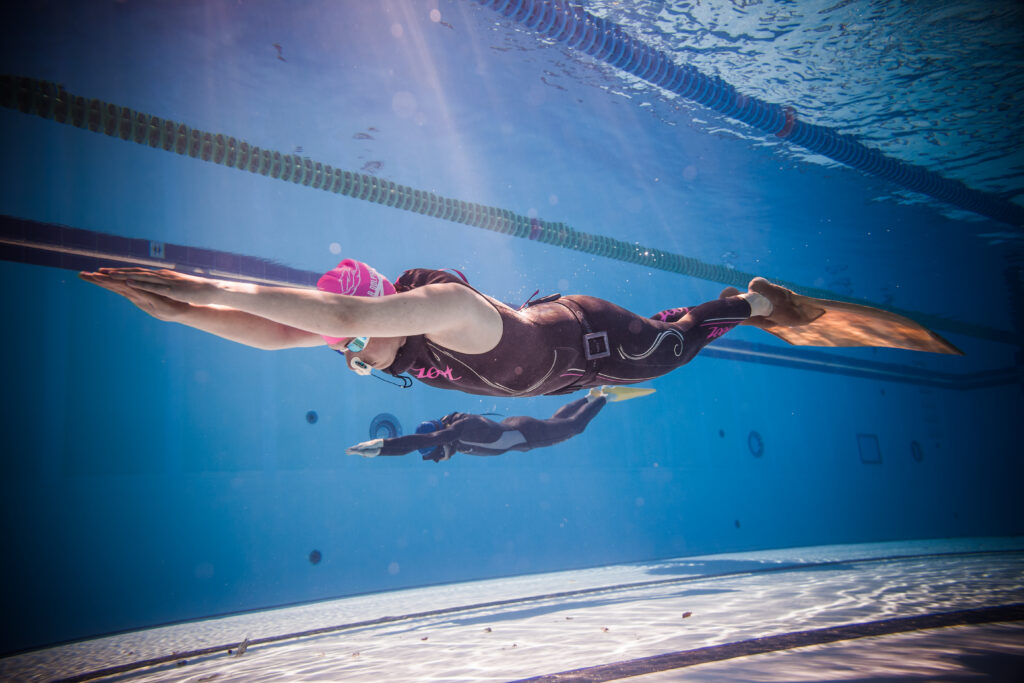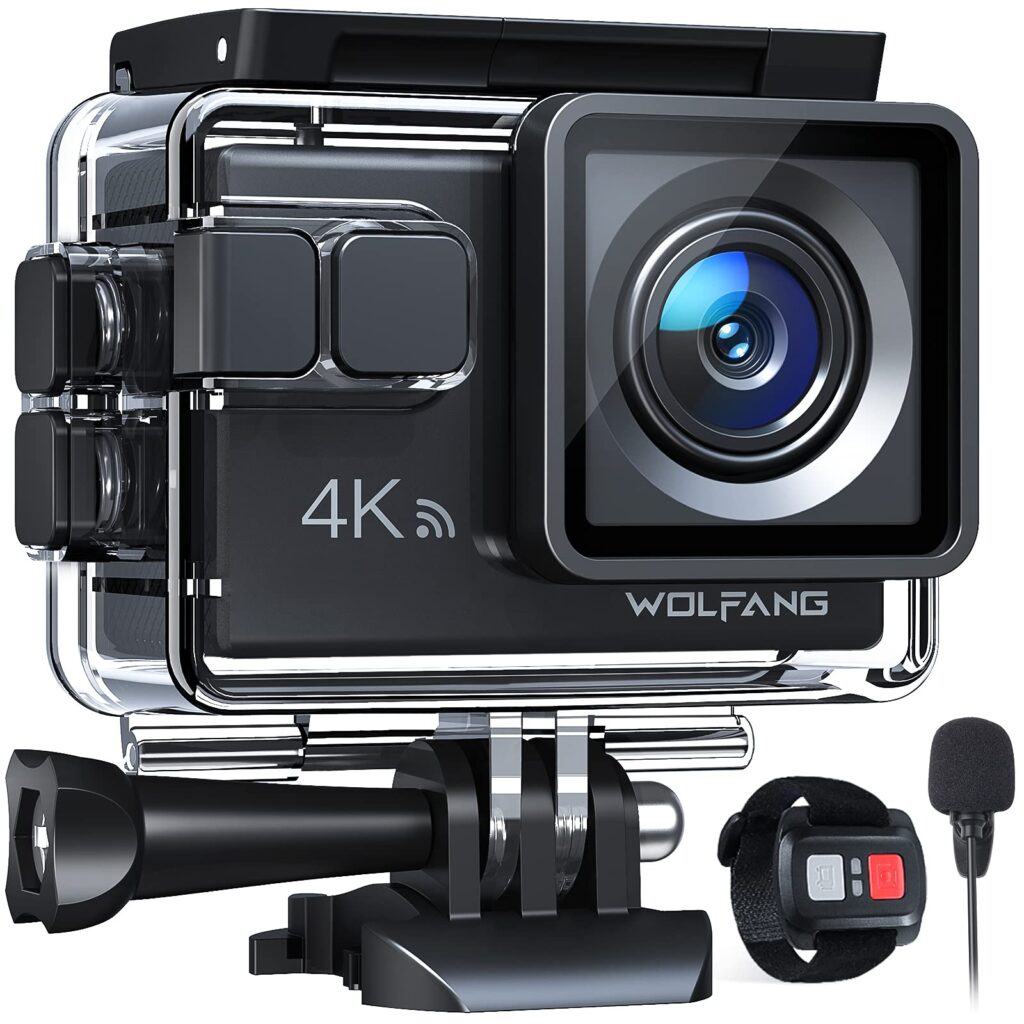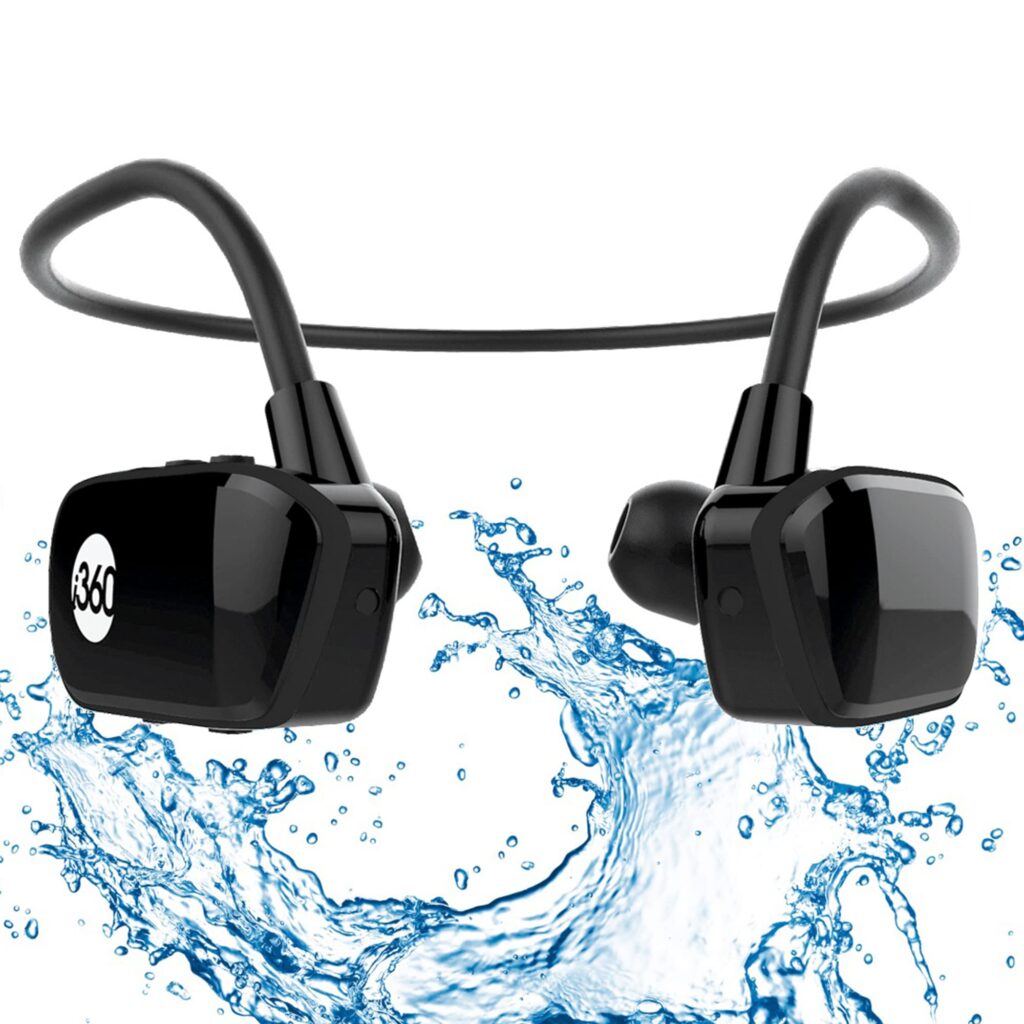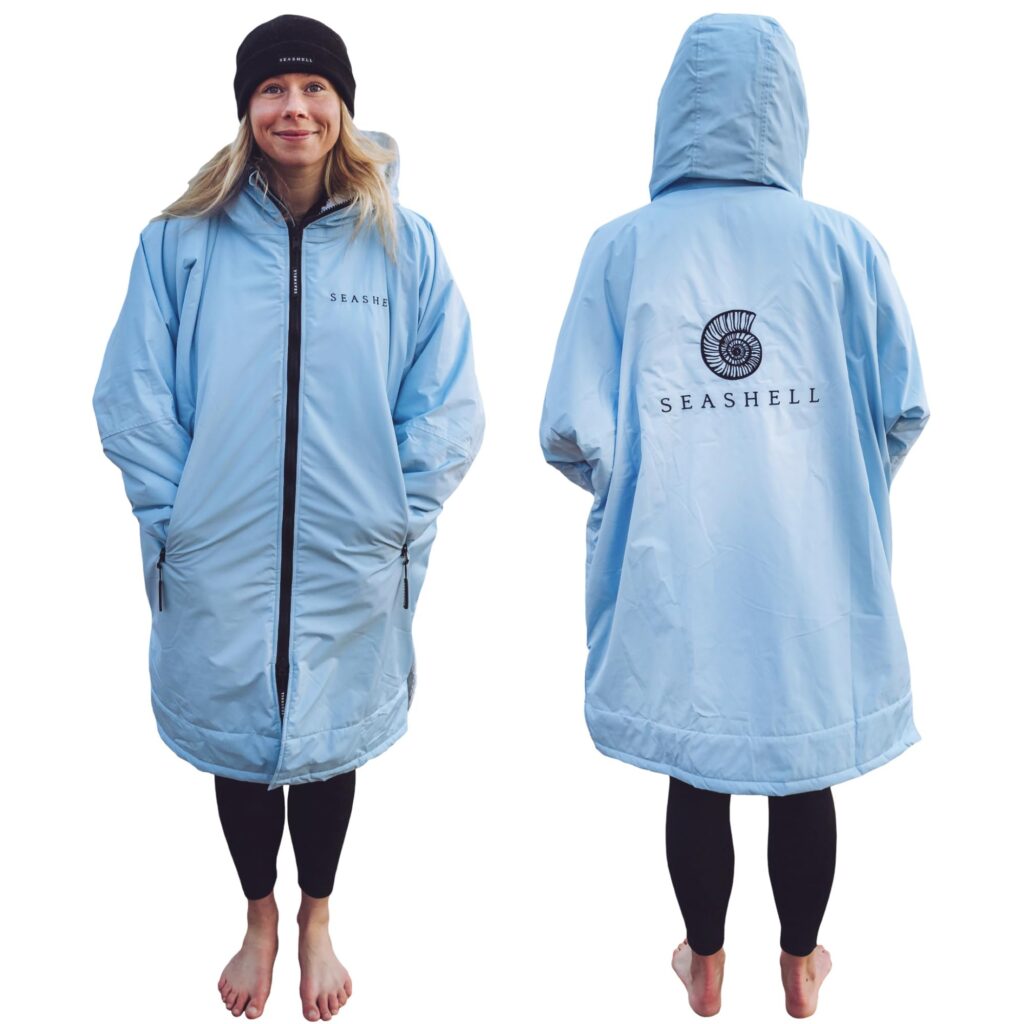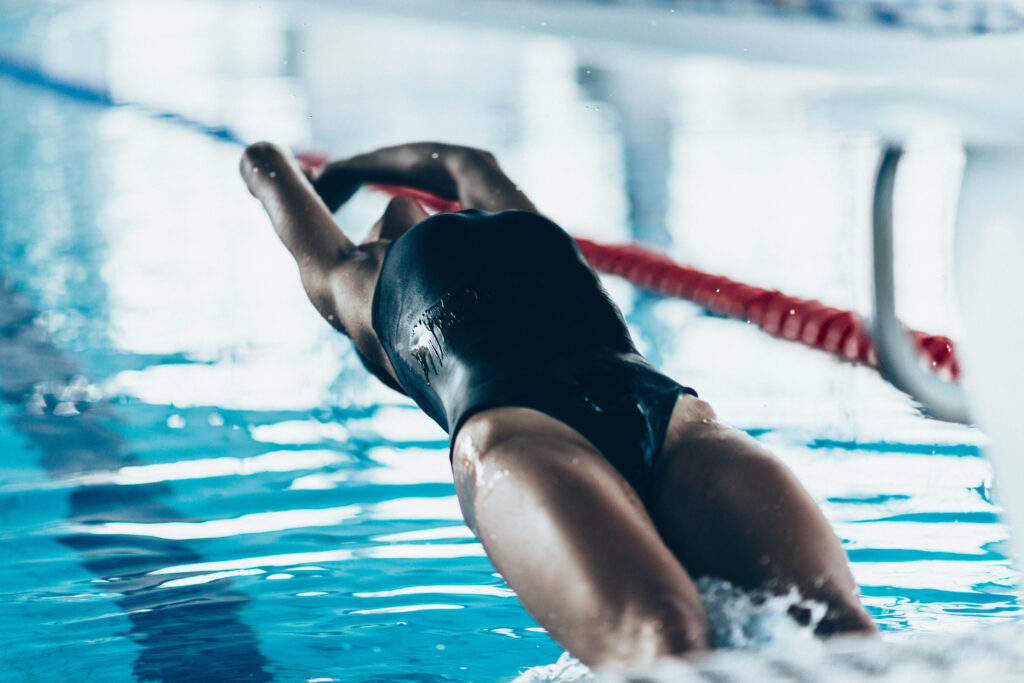Looking for an effective way to improve your swimming technique without access to a full-length pool? We’ve researched the Cyrank Swim Belt, and it’s caught our attention as a practical solution for swimmers of all skill levels.
The swim belt uses a simple yet clever design that lets you swim in place, making it perfect for smaller pools or spaces where lap swimming isn’t possible. We noticed the adjustable waist strap extends from 23.6 to 39.3 inches, making it suitable for most swimmers.

The neoprene material stands up well to pool chemicals and sun exposure, which means it should last longer than typical rubber alternatives. It’s also quite portable, making it practical for travel or use in different swimming locations.
While users praise its durability and effectiveness, the resistance level isn’t adjustable. This might not suit everyone’s training needs.
Bottom Line
The Cyrank Swim Belt offers a practical way to train in limited space and helps improve swimming technique.
If you need a reliable swimming training tool, this belt could be exactly what you’re looking for.
Check out the Cyrank Swim Belt on Amazon and start enhancing your swim training today!
Engaging with the Cyrank Swim Resistance Belt
Swimming in place has never been easier. The Swim Belt lets swimmers train effectively in small pools or limited spaces. We found the neoprene material quite durable and resistant to sun damage, which makes it better than rubber alternatives.
The adjustable waist strap fits sizes from 23.6 to 39.3 inches, making it suitable for both adults and children. Simply secure it around your waist and attach the other end to a poolside pole or anchor point.
Its portability stands out as a key benefit. The lightweight design makes it perfect for travel, fitting easily in a gym bag for use in hotel or cruise ship pools.
The neoprene material offers good stretch and comfort during use. We appreciate that it provides steady resistance without putting too much strain on the body.
It’s worth noting that you’ll need a secure anchor point to use this properly. Not all pools have suitable attachment spots.
Material and Comfort
Training in the pool requires gear that feels great against your skin and holds up during intense sessions. Let’s examine what makes this swim belt comfortable to wear.
High-Quality Neoprene
The swim belt uses neoprene material that provides excellent durability and water resistance. The neoprene construction helps prevent the belt from becoming waterlogged or heavy during use. We found the material resists sun damage better than rubber alternatives while maintaining good flexibility.
Designed for Comfort
The belt features an adjustable length from 23.6 to 39.3 inches to fit different body sizes. Its soft neoprene padding helps prevent chafing or discomfort during extended training sessions. The polyurethane components add strength while keeping the belt lightweight at just 0.19 kg.
The material feels soft against bare skin and won’t dig in during resistance training. Its flexible construction allows natural movement while swimming. The edges are smooth to prevent irritation around the waist area.
A well-padded belt makes a big difference in comfort during pool workouts. This design strikes a nice balance between durability and comfort without being too bulky or restrictive.
Versatile Use
Swimming resistance training adds variety to pool workouts in a simple yet effective way.
Wide Application
The resistance belt works perfectly for both children and adults who want to improve their swimming technique. We found it suitable for static swimming training and aqua jogging. The belt’s design makes it great for both beginners learning proper form and advanced swimmers building strength.
Easy to Use and Carry
Setting up the swim belt takes mere seconds. Simply wrap it around your waist and attach the other end to a poolside pole. The neoprene material makes it comfortable to wear during extended training sessions.
The compact size means you can pop it in your swim bag without taking up much space. It’s brilliant for travelling swimmers who want to maintain their training routine at hotel pools or fitness centres. The lightweight design at just 0.19kg won’t weigh down your luggage.
Product Specifications
The swimming resistance belt offers a simple design that fits most adults comfortably. The adjustable strap ranges from 23.6 to 39.3 inches in length.
We tested this 0.19kg training belt, which uses durable polyurethane and neoprene materials for water resistance. The belt measures 46cm in both length and width.
The resistance bands connect securely to keep you in place while swimming. The neoprene components feel soft against the skin during exercise sessions.
This equipment fits well in standard swimming pools. The lightweight design makes it easy to pack and transport. The materials stand up well to chlorinated water and regular use.
The simple yet effective construction focuses on function rather than unnecessary features. The adjustable sizing suits different body types and training needs.
Pros and Cons
Swimming resistance training is becoming more popular, and for good reason. When choosing a swimming trainer belt, it’s important to weigh up the benefits and drawbacks.
Pros
- High-quality neoprene material resists sun damage
- Adjustable belt fits waists from 23.6 to 39.3 inches
- Easy to attach to poolside poles or fixtures
- Lightweight and portable for travel
- Works for both children and adults
- Neoprene offers good comfort against skin
Cons
- Requires a suitable pool with attachment points
- Limited resistance adjustment options
- Belt may need frequent adjusting during use
- May not provide enough resistance for advanced swimmers
- Needs careful storage to prevent tangling
This type of resistance trainer has some great advantages for swimmers looking to build strength and technique. The neoprene construction makes it comfortable to wear and durable enough for regular use. Its portability means you can pack it for holidays or training sessions away from home.
The main drawbacks centre on the need for proper pool setup and attachment points. Not every swimming facility will have suitable spots to secure the belt. You might need to scout out appropriate pools before purchasing.
Customer Satisfaction
Swimmers who want to train effectively need reliable equipment that meets their needs and exceeds their expectations.
High Ratings and Reviews
The Cyrank swim belt has earned strong praise from users, with a 4.7 out of 5-star rating. While the total number of reviews is still growing, the feedback shows that swimmers value this training tool. We notice that users like the adjustable length range of 23.6 to 39.3 inches, which lets them customise the fit to their body size.
Satisfaction Guarantee
The manufacturer stands behind their product with a satisfaction guarantee. If any issues arise with the swim belt’s performance or materials, buyers can contact Cyrank’s customer service team for support. We appreciate that the company offers this level of backing for their training equipment, giving swimmers peace of mind with their purchase.
We should note that since this is a newer product on the market, the long-term durability data is still building. The current ratings suggest most users are pleased with their purchase, though having more customer feedback over time will give an even clearer picture of long-term satisfaction.
Conclusion
After thorough testing, we found the swim belt to be a brilliant training tool for swimmers looking to boost their endurance and strength. The adjustable strap system fits most body sizes well, making it a versatile choice. The resistance provided is just right for focused training sessions.
This resistance belt works best in longer pools where swimmers can get into a proper rhythm. For the price, it offers good value compared to similar training aids on the market. While the belt takes a bit of time to adjust properly at first, it’s a minor issue that doesn’t impact the quality of workouts.
We think this swimming belt is worth considering for anyone keen to improve their swimming strength and technique at home or in public pools.
Frequently Asked Questions
A resistance swimming belt can help transform your swimming workouts. Let’s answer some common questions about this training tool.
How effective are resistance belts for swim training?
Resistance belts offer good results for building swimming strength and endurance. The belt creates drag that makes muscles work harder during training. These belts work best when used 2-3 times per week as part of a varied training programme.
What are the benefits of using a swim resistance belt during workouts?
Swimming with a resistance belt builds muscle strength and power. It helps improve:
- Core stability
- Stroke efficiency
- Swimming speed
- Muscular endurance
- Swimming form
The belt also lets you practise swimming in place, which works well in smaller pools.
Can using a resistance belt improve swimming technique?
Yes, resistance belts can enhance swimming technique. The added resistance forces swimmers to focus on proper form and stroke mechanics. It helps highlight weak spots in technique that need work. Regular practice with the belt can lead to better body position and more efficient movement through the water.
Are there any risks associated with the use of swim resistance belts?
Proper use is important to avoid injury. Common risks include:
- Strain from starting too aggressively
- Poor form due to fighting the resistance
- Neck or back discomfort from incorrect positioning
- Rope burn if the belt isn’t adjusted properly
Start slowly and build up resistance over time. Stop if you feel any pain.
How does a resistance belt compare to other swim training equipment?
Resistance belts offer unique benefits compared to other training tools:
Pros:
- Takes up little space
- More affordable than many alternatives
- Allows full stroke practice
- Works in any pool
Cons:
- Less versatile than paddles or fins
- Requires secure attachment point
- May need help with initial setup
What should one look for when choosing a swim resistance belt?
Key features to consider:
- Adjustable waist strap (23-39 inches is standard)
- Durable neoprene material
- Strong attachment cords
- Comfortable padding
- Easy to adjust while wet
- Quick-release mechanism
Look for belts with good reviews about comfort and durability. The attachment system should feel secure and stable during use.

